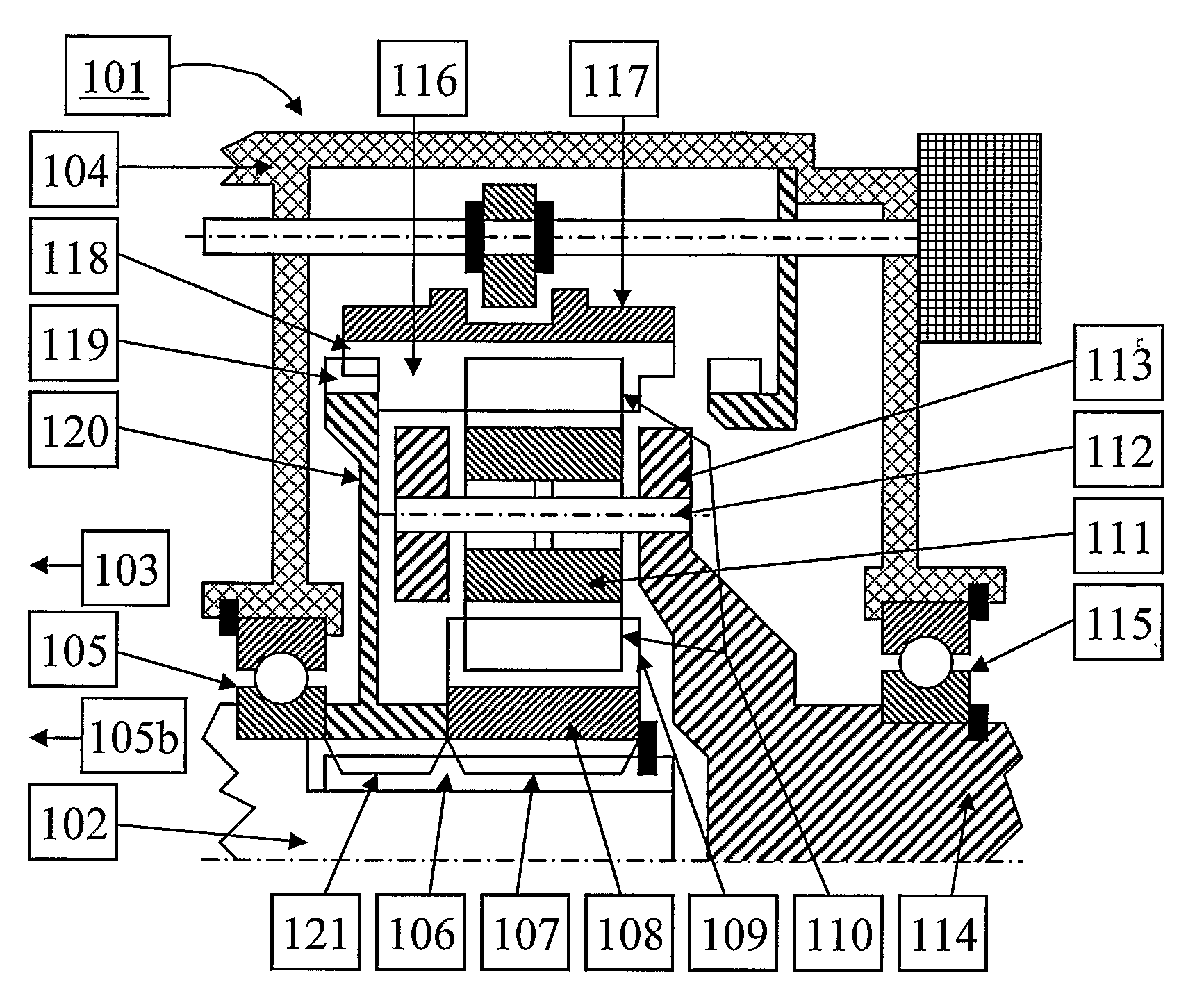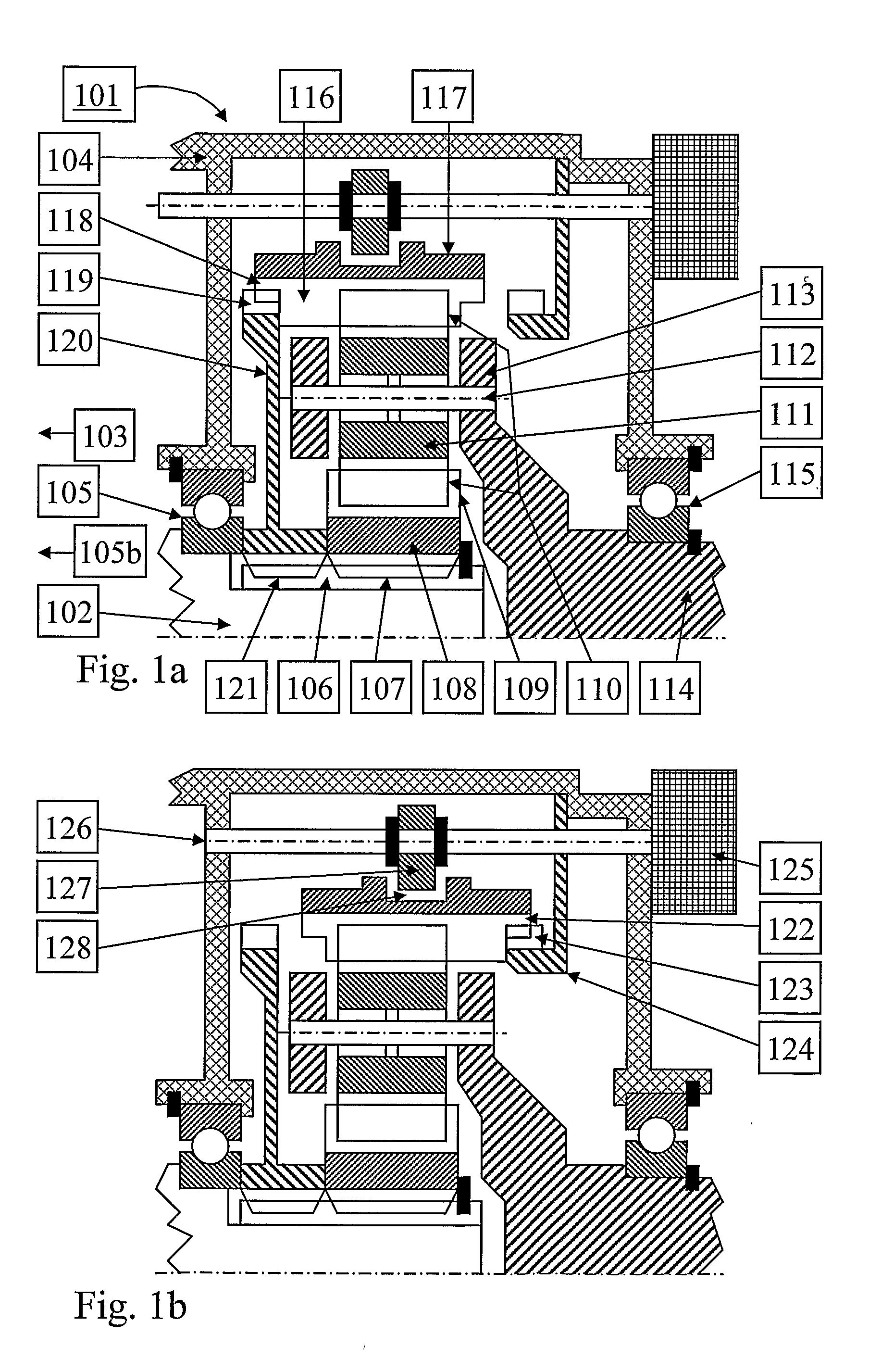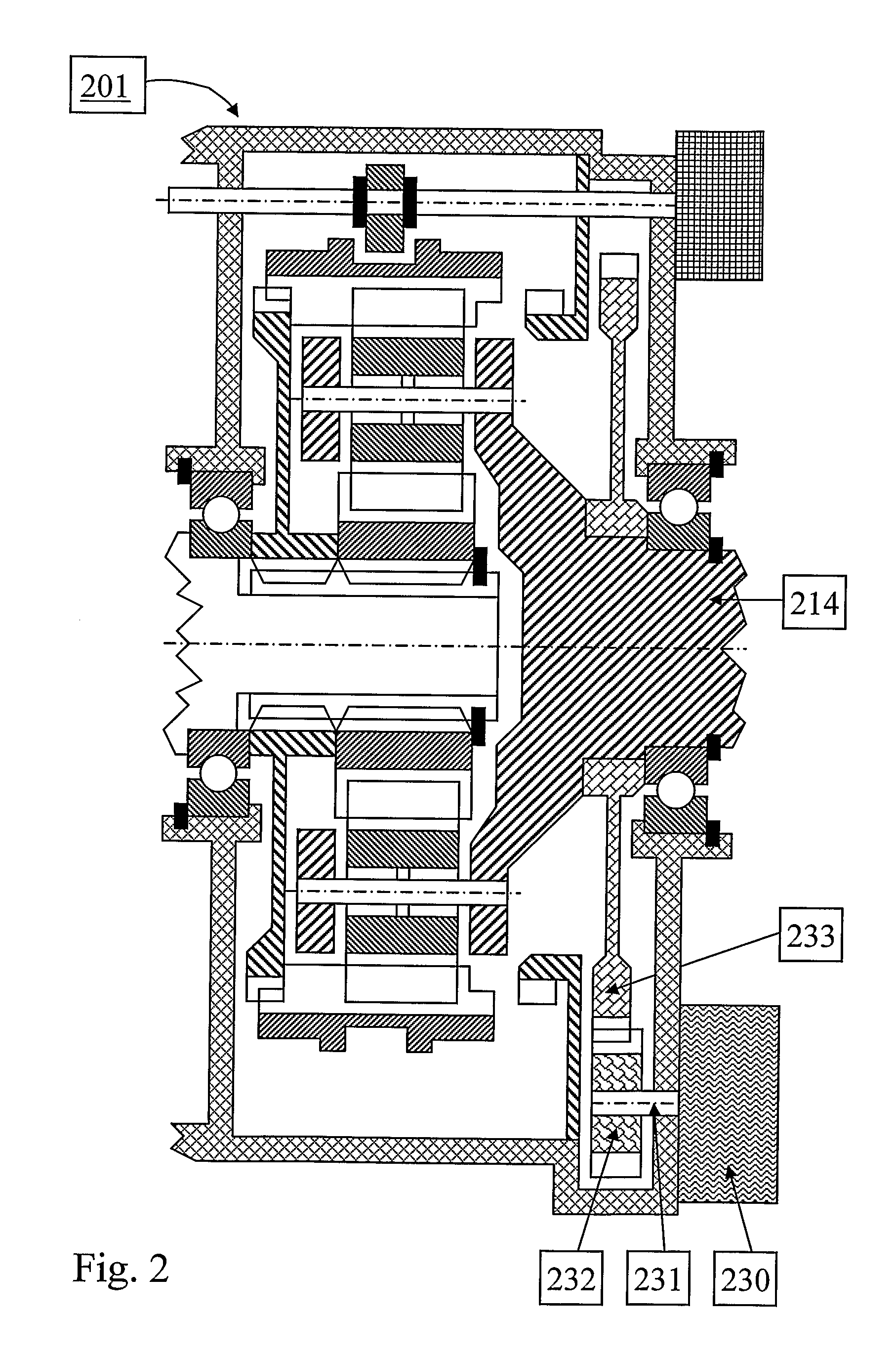Device for Preventing Gear Hopout in a Tooth Clutch in a Vehicle Transmission
a technology of transmission and gear, which is applied in the direction of clutches, gearing control, gearing elements, etc., can solve the problems of insufficient self-retaining action of conventional back-tapered clutch teeth, the tendency to turn into an unstable state, and the inability to prevent relative motion, etc., to reduce the possibility of gear hopout, reduce production costs, and limit the effect of possible misalignment of the supported sha
- Summary
- Abstract
- Description
- Claims
- Application Information
AI Technical Summary
Benefits of technology
Problems solved by technology
Method used
Image
Examples
Embodiment Construction
[0028]The potential gear hopouts that have been described above can be counteracted by having the shift actuator activated also between shifts. Thereby, axial motion of the engaging sleeve or ring gearwheel can be limited, and gear hopouts can be prevented. This is illustrated in FIG. 5 for a planetary range section 501 similar to the ones in FIG. 2 and FIG. 3. The range shift actuator 525 is activated, and a force 571 is applied on the range shift rod 526. In case of an urge for axial motion out of engagement of the ring gearwheel 517, such an axial motion will be prevented by the force 571. Hence, a gear hopout is prevented. A similar solution could also be applied on the splitter unit 450 in FIG. 4.
[0029]In a preferred embodiment, the range shift actuator 525 in FIG. 5 is only activated between shifts when the retarder is in operation, that is, when there is a gear mesh force 540 acting on the retarder driver gearwheel 533. Thereby, unnecessary activation of the range shift actua...
PUM
 Login to View More
Login to View More Abstract
Description
Claims
Application Information
 Login to View More
Login to View More - R&D
- Intellectual Property
- Life Sciences
- Materials
- Tech Scout
- Unparalleled Data Quality
- Higher Quality Content
- 60% Fewer Hallucinations
Browse by: Latest US Patents, China's latest patents, Technical Efficacy Thesaurus, Application Domain, Technology Topic, Popular Technical Reports.
© 2025 PatSnap. All rights reserved.Legal|Privacy policy|Modern Slavery Act Transparency Statement|Sitemap|About US| Contact US: help@patsnap.com



